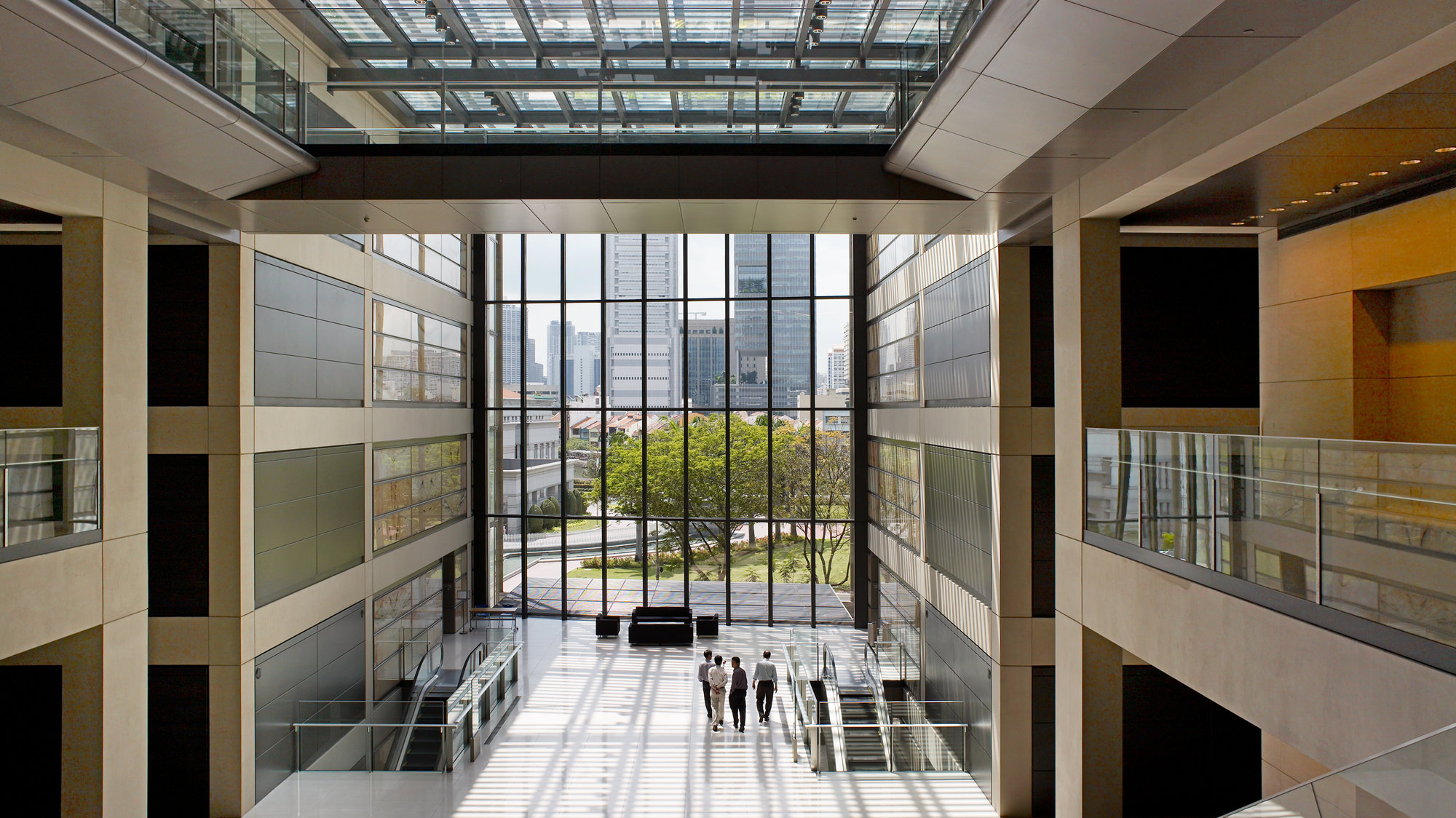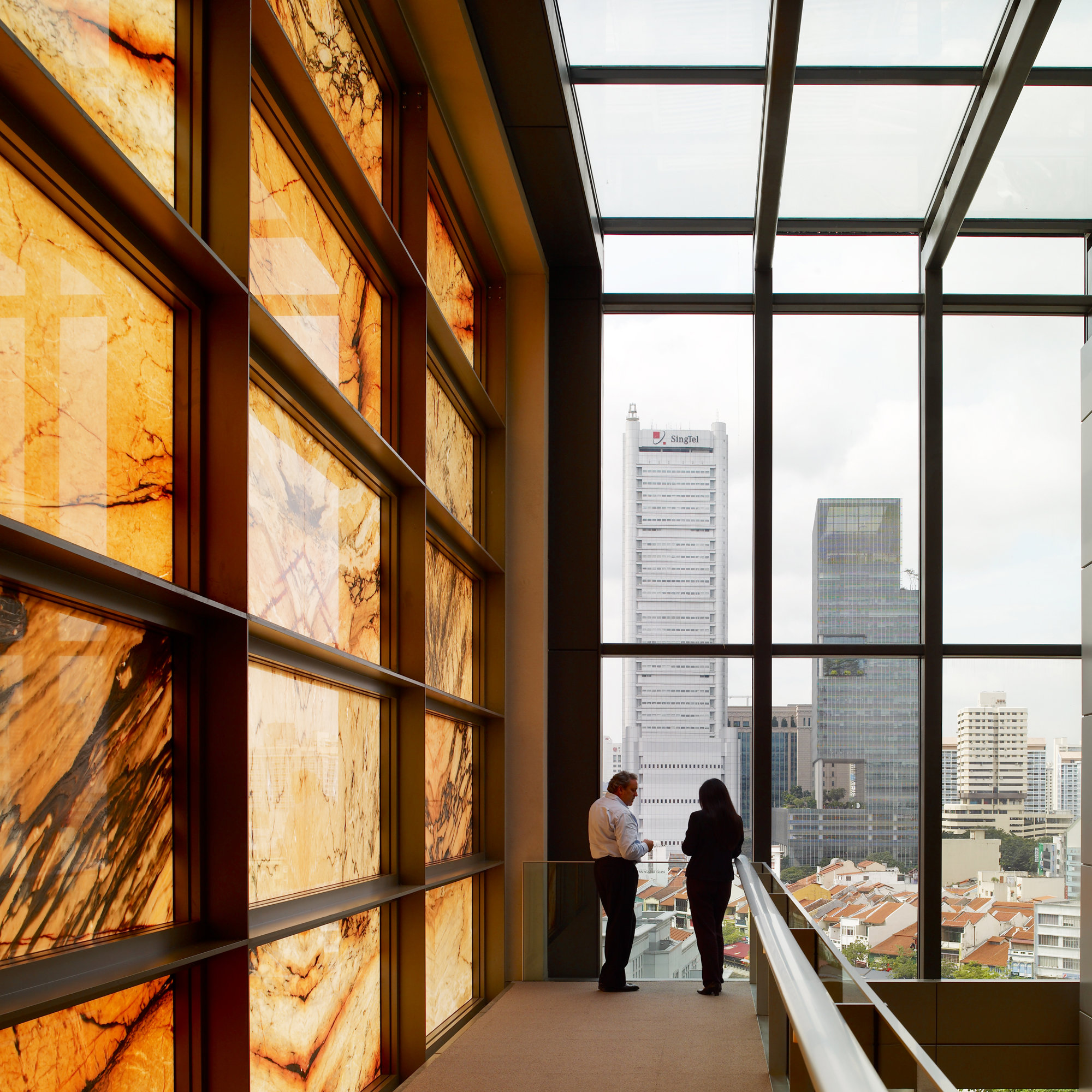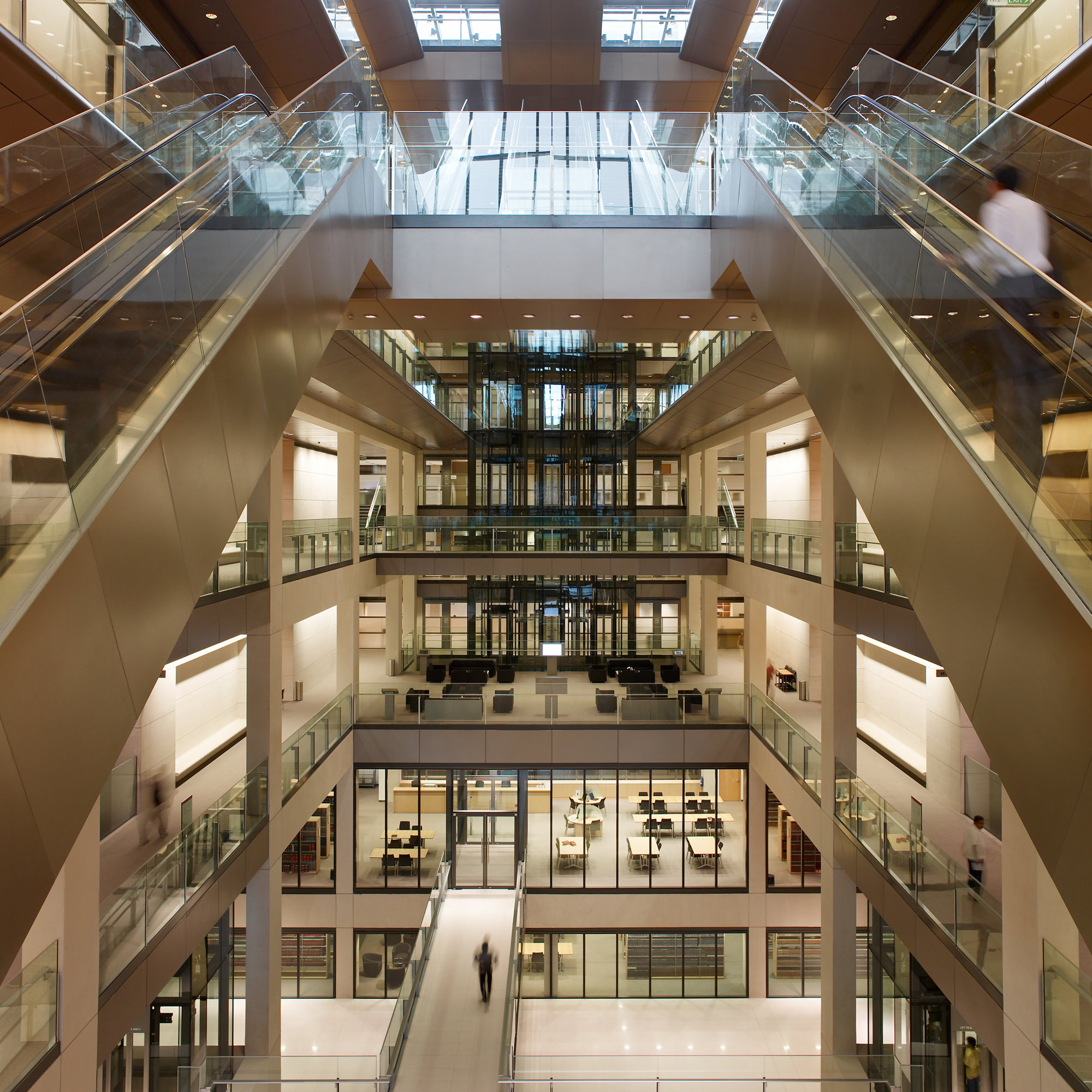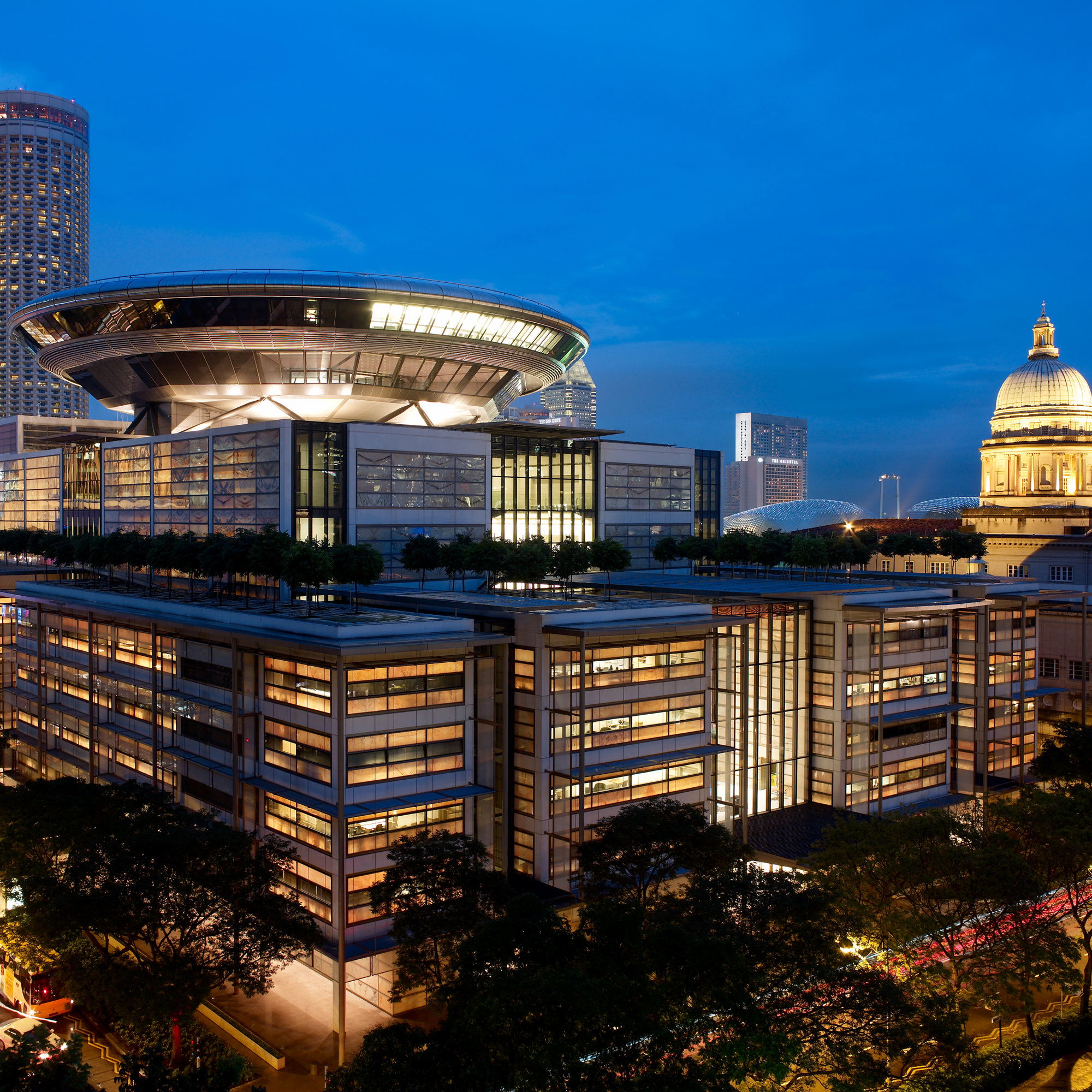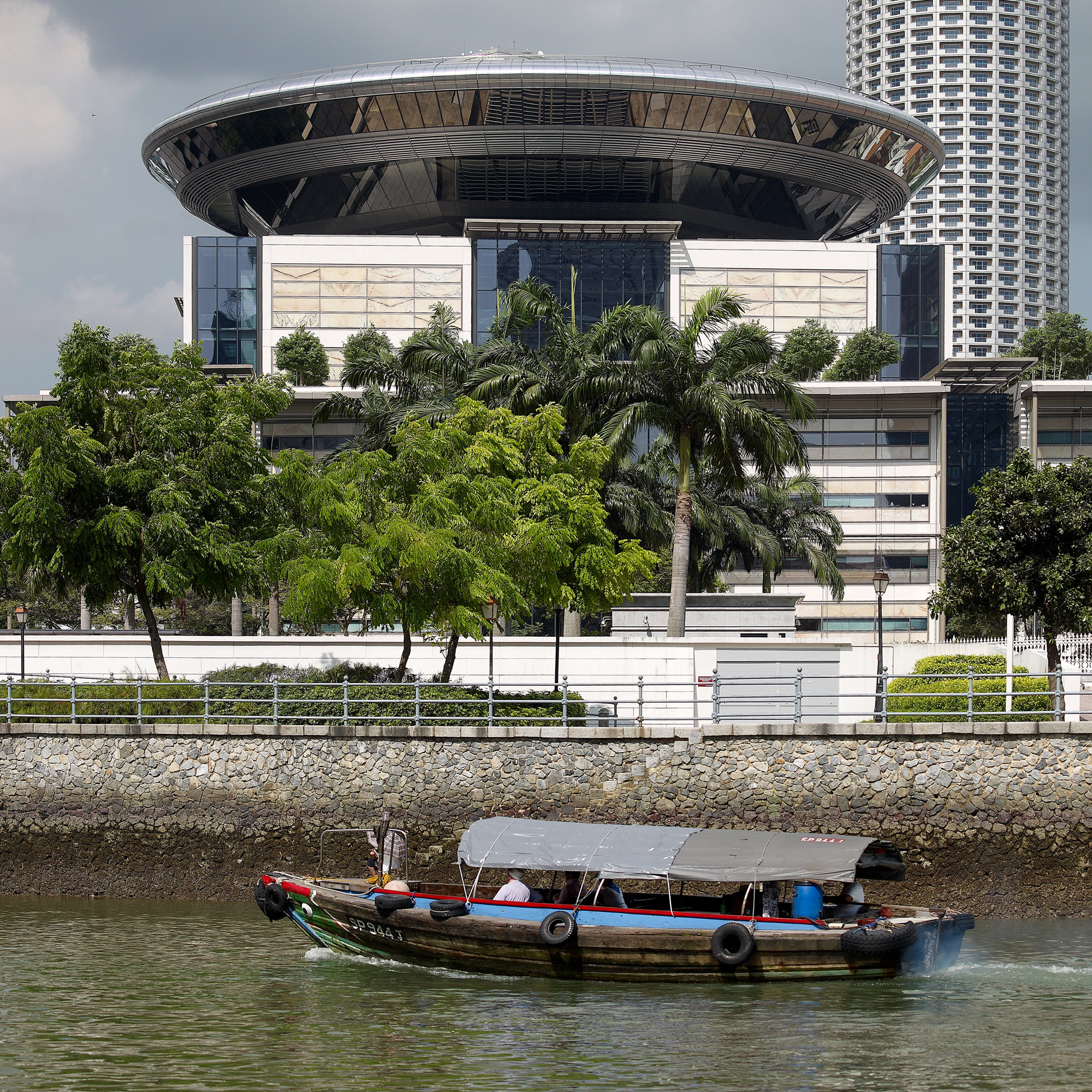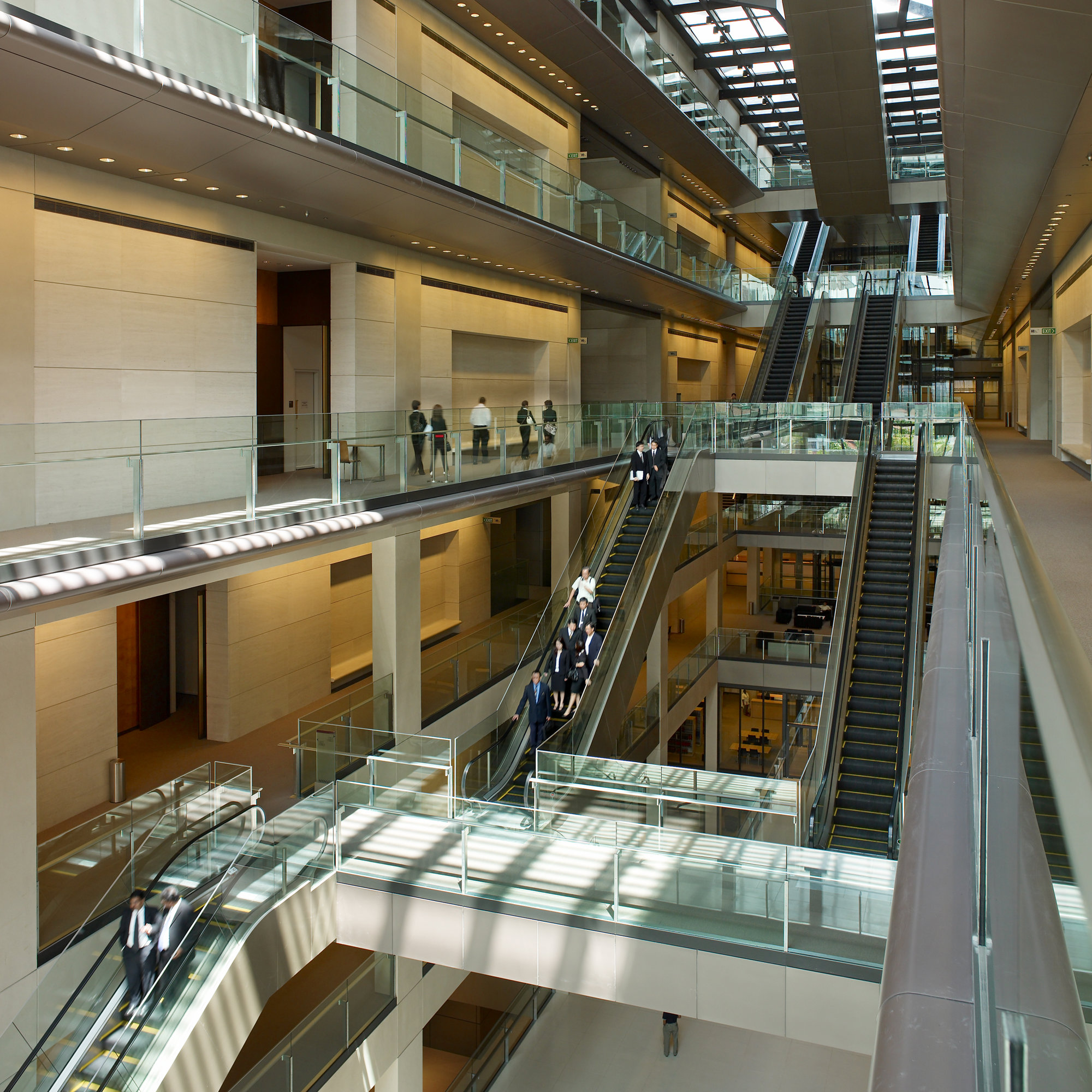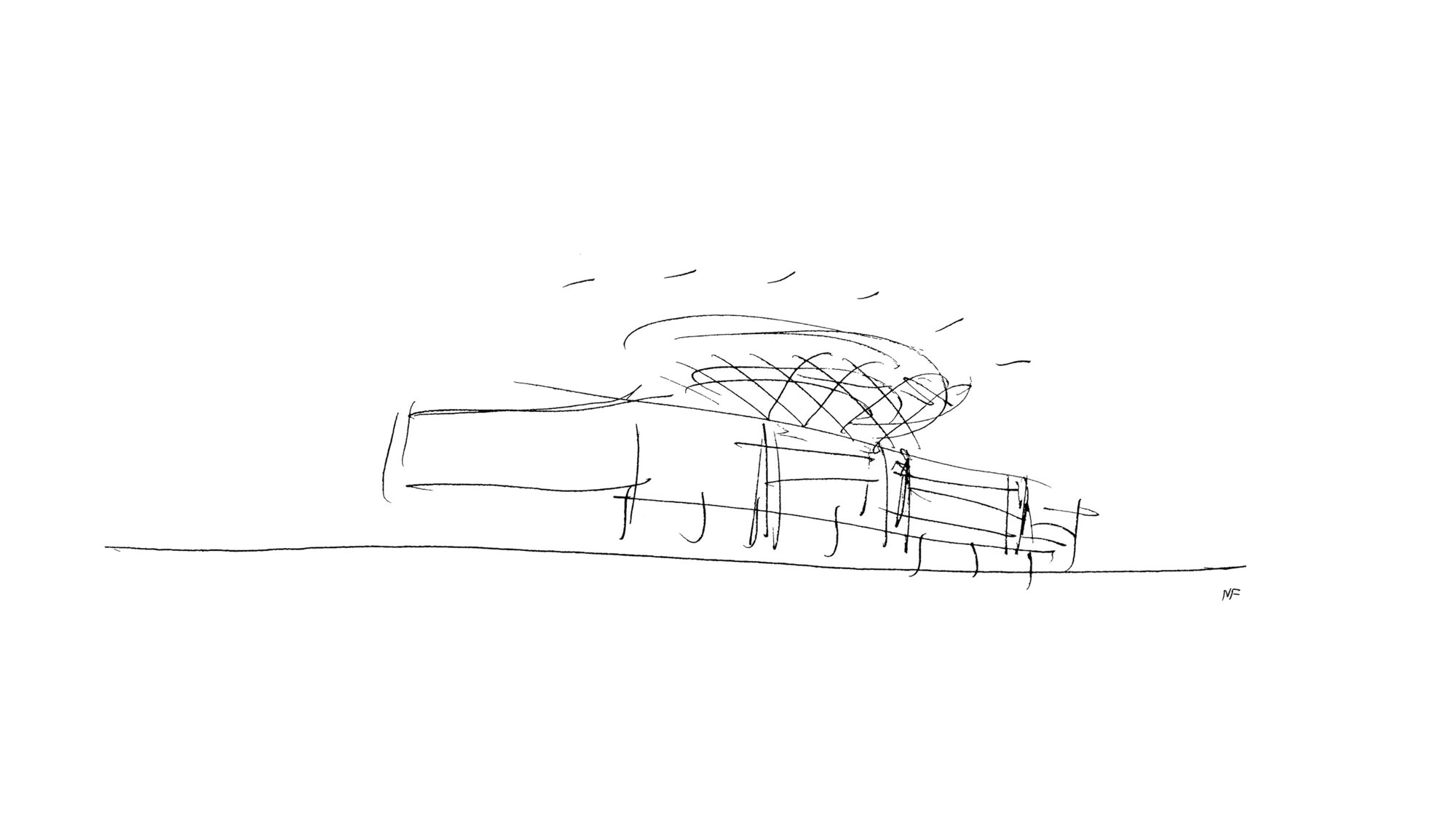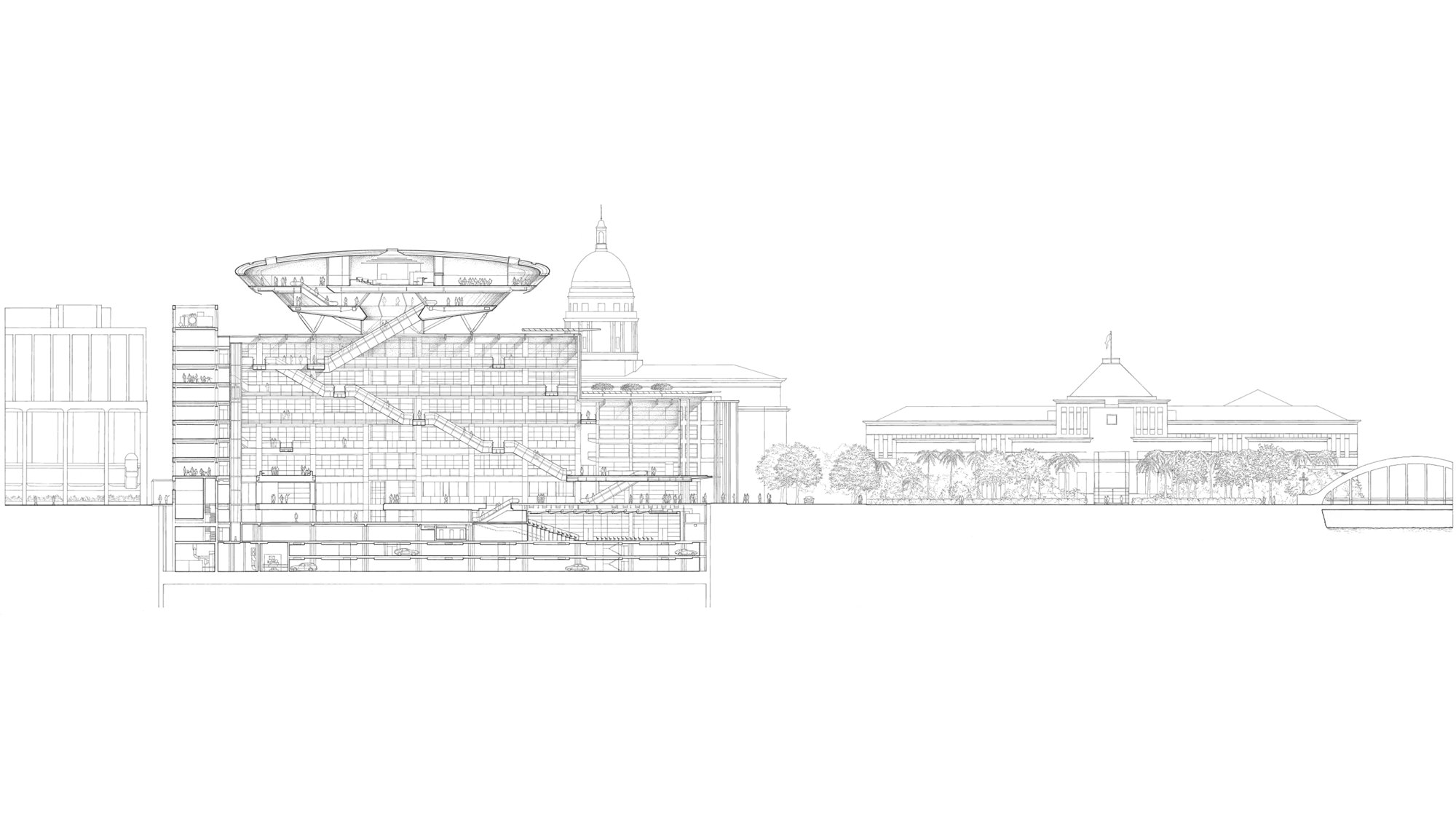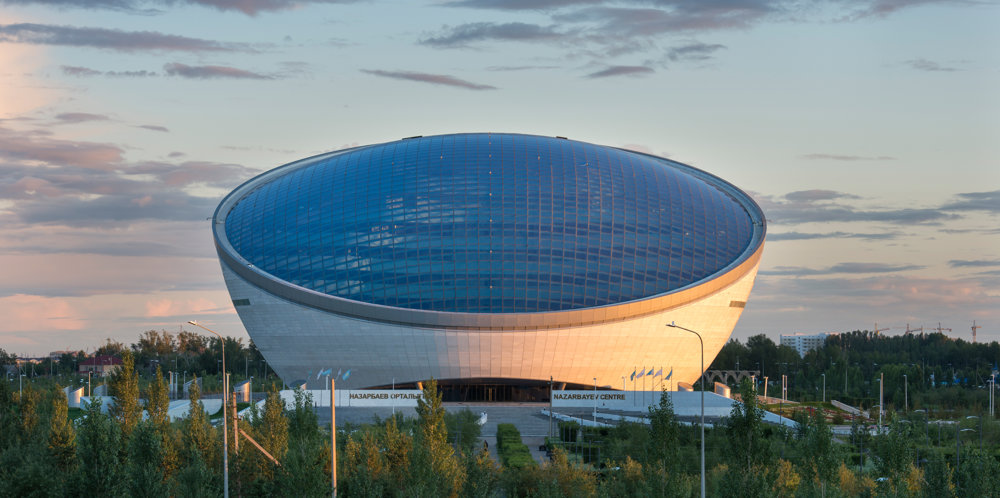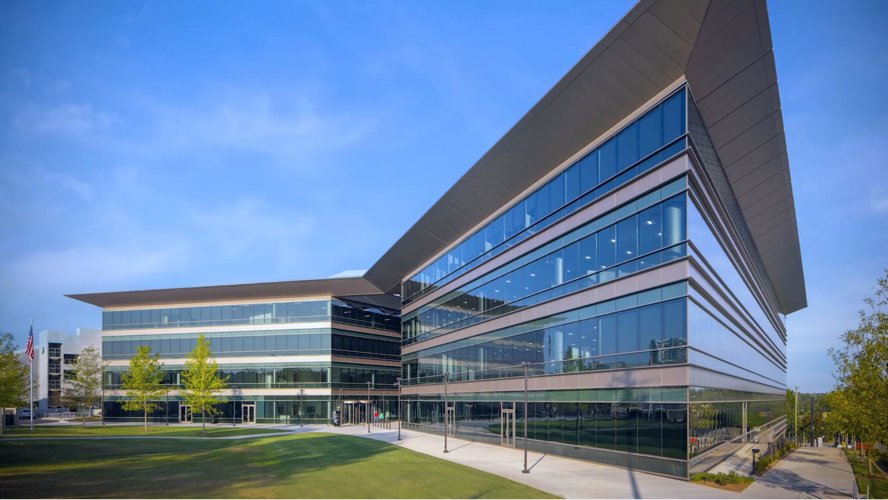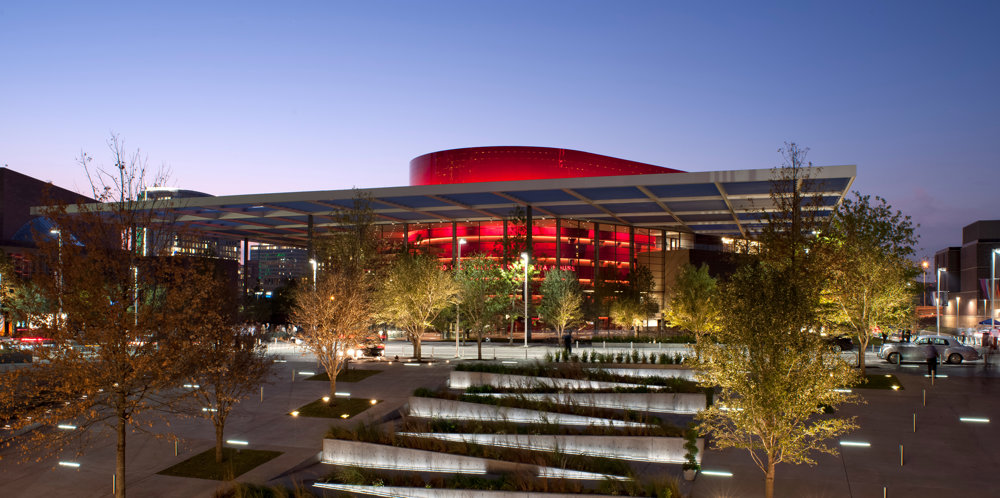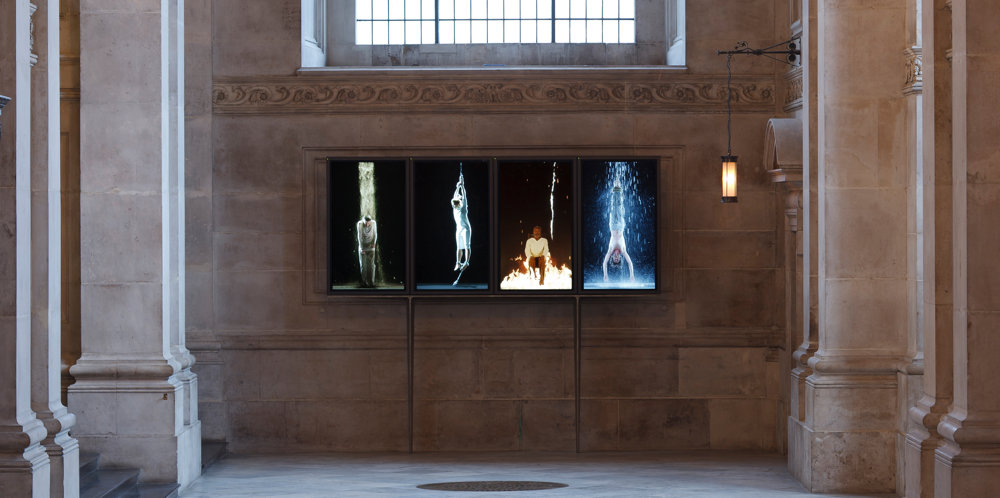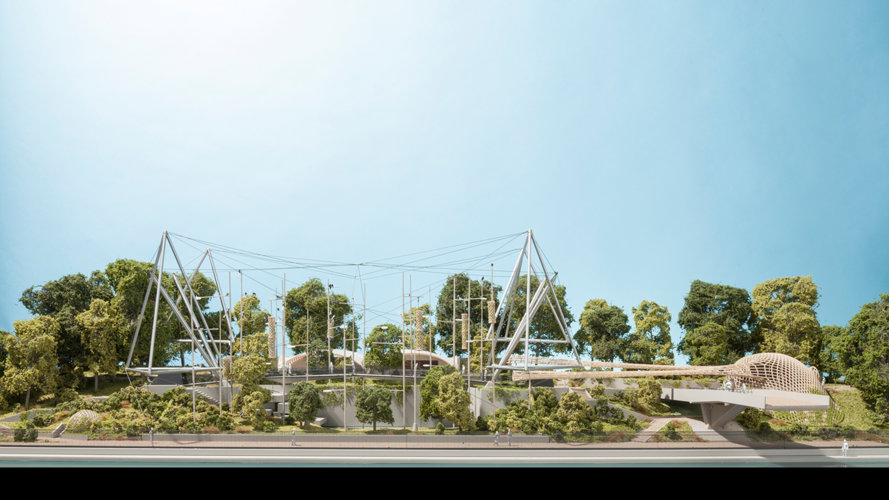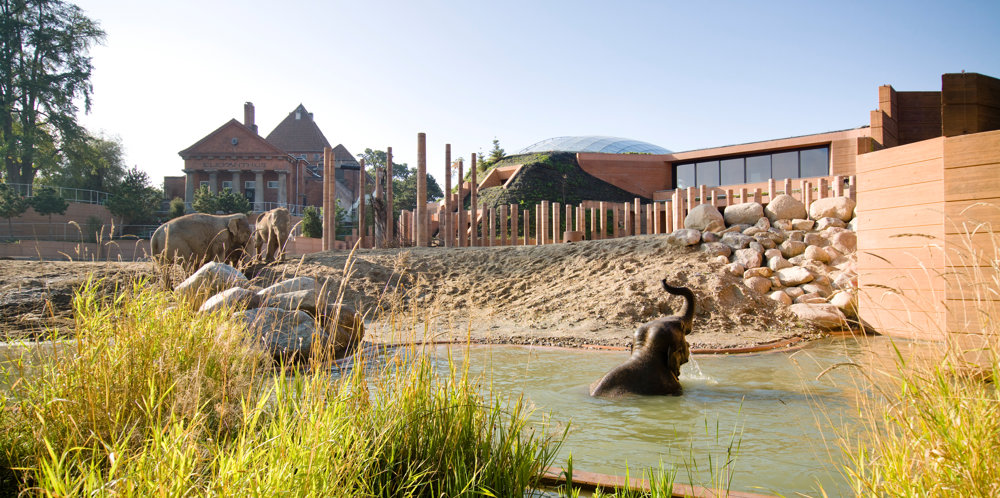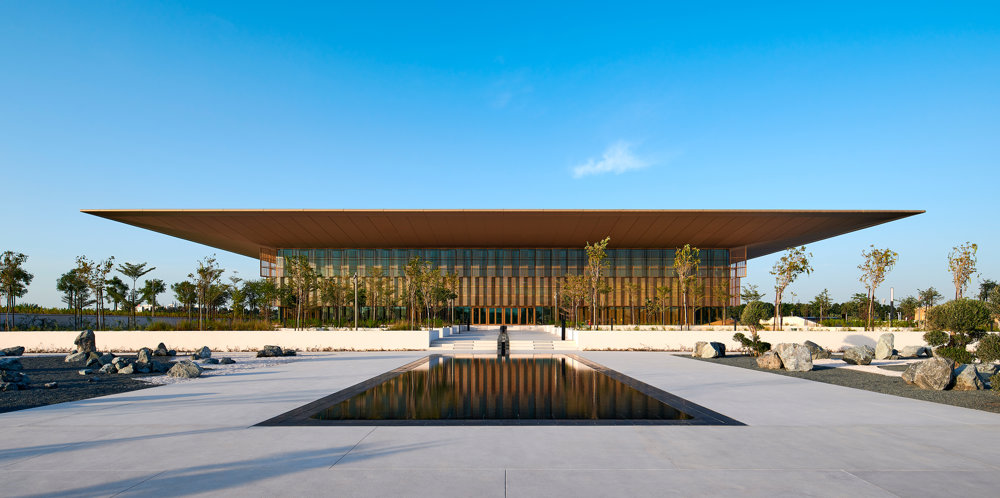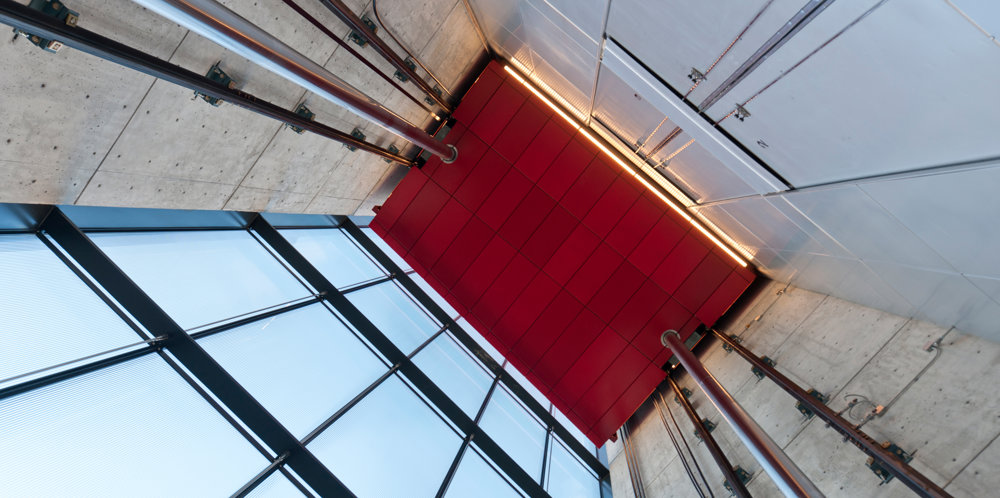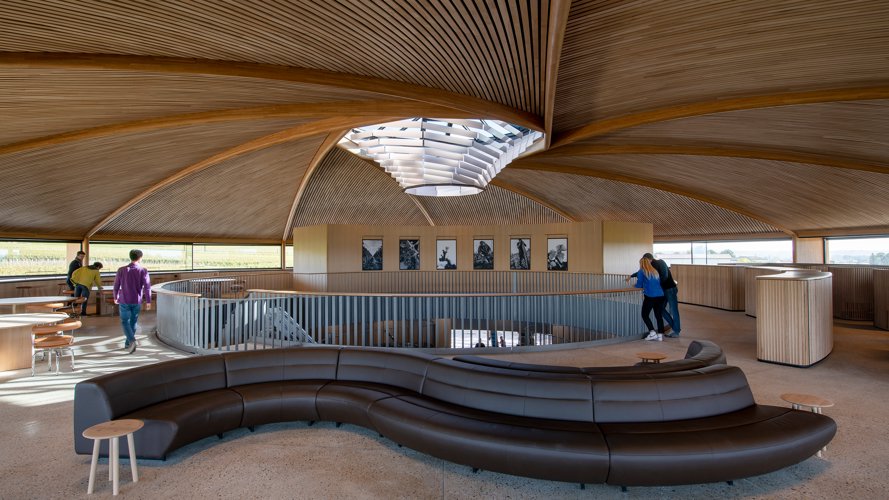Singapore’s Supreme Court is a major judicial centre conceived in response to a rapidly growing population and the limited facilities of the old Supreme Court building, which it stands alongside. Located within the Colonial District, on the north bank of the Singapore River, the building takes its cue from the scale of the neighbouring civic buildings, offering a modern reinterpretation of their colonial vernacular to convey an image of dignity, transparency and openness.
The building provides twelve civil, eight criminal and three appeal courts, together with facilities for the Singapore Academy of Law, and its organisation reflect the hierarchies of the judicial system. Formally, it is articulated as a series of blocks, cut through with arcades, designed to knit the building into the city fabric. The civil courts occupy the lower floors, with the criminal courts above. The court of appeal, the highest court, is raised symbolically in a disk-like form at the top of the building in a contemporary iteration of the old courthouse’s dome. Like the Reichstag’s cupola, it incorporates a public platform that offers a panoramic view across the city. The blocks containing the courts line a broad atrium that forms a processional circulation route through the building and brings daylight down through the public spaces. Flanking the courts are administrative blocks, which at ground level form a covered arcade along the street front.
The building is designed for long-term flexibility, including future changes in the size and configuration of the courtrooms and advances in information technology. It employs a palette of high-quality materials including glazed stone – a laminate of glass and stone – which appears solid, but by day allows light to filter through it, and by night emits a warm glow. Environmentally, it incorporates a range of passive climate control devices, including solar shading to the offices, and the roofs are planted with trees, creating a blanket of greenery that shelters a public promenade.









